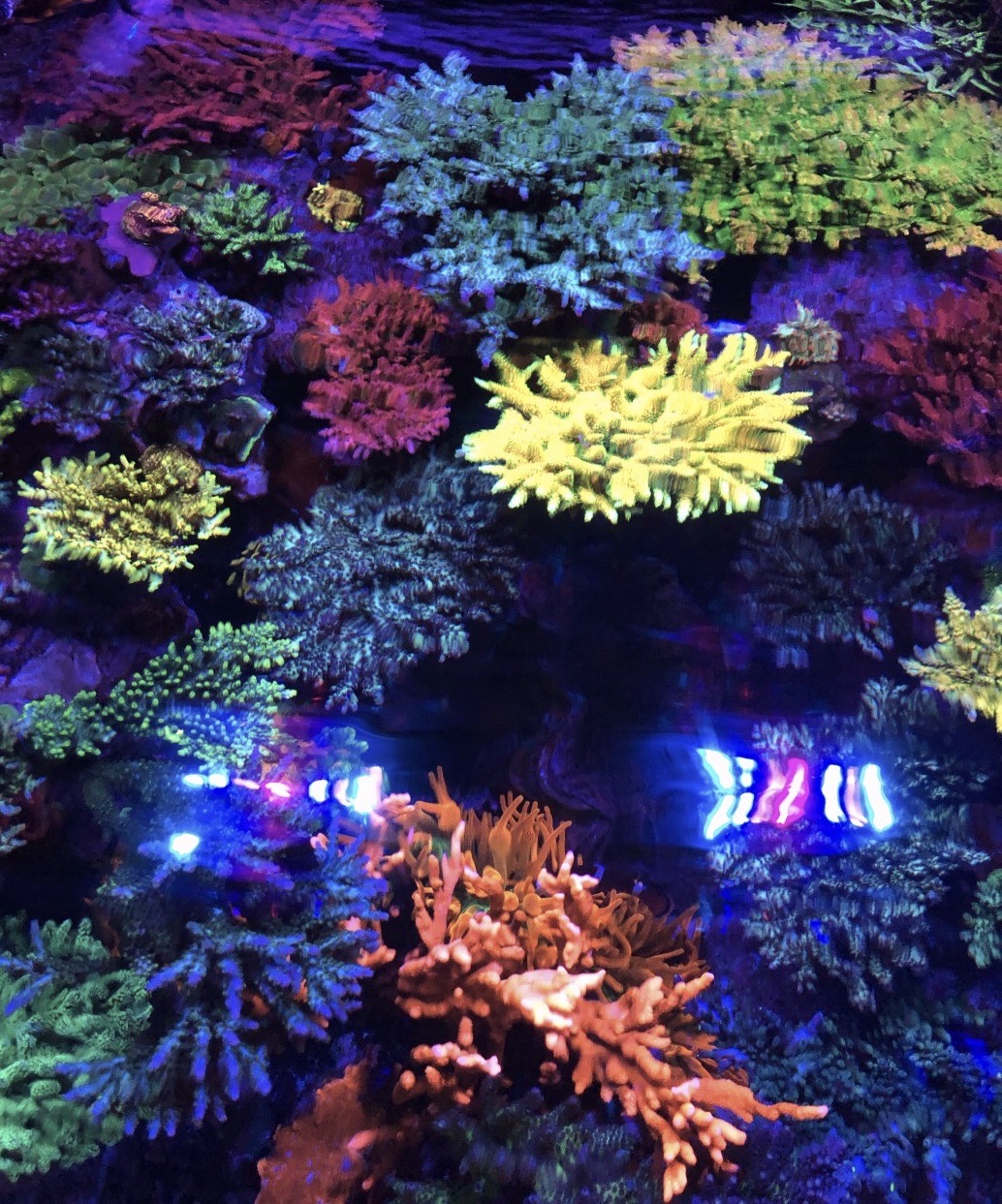As the hobby has continued to expand and the knowledge to be successful with it, some aspects have been found to be more important than originally thought. Foremost among these is water chemistry and specifically minor trace elements. While the major elements like alkalinity and calcium are critical for the health and survival of corals, minor trace elements may be thought of as the limiting factors necessary for optimal coral growth and coloration.
This understanding has improved so much that there is now a much better understanding of what each element does and the optimal levels of each. As a result of this increased understanding and improved testing, the proper amounts can be added on a daily or weekly basis. In addition to this understanding, the relationship between the elements is also now being studied. So now rather than just trying to have a certain level of trace element X and think things are correct, it may also be necessary to also have an adequate supply of trace element Y in order for X to work. This information is increasing our chances of success even more.
When trace elements were added in the past it was often done with the belief that their addition would result in improved coral growth and optimal coloration regardless of what else was going on in the tank. However, from what I have observed and read the addition of trace elements will only be beneficial when everything else in the tank is in order. It should also be noted that there is little evidence in the scientific literature that most corals can take up any trace element directly so this begs the question of why then should they be added?
While corals do not take up most trace elements directly bacteria do. Interestingly enough, the number one food of most coral is bacteria. So that is how the trace elements are getting to the corals.
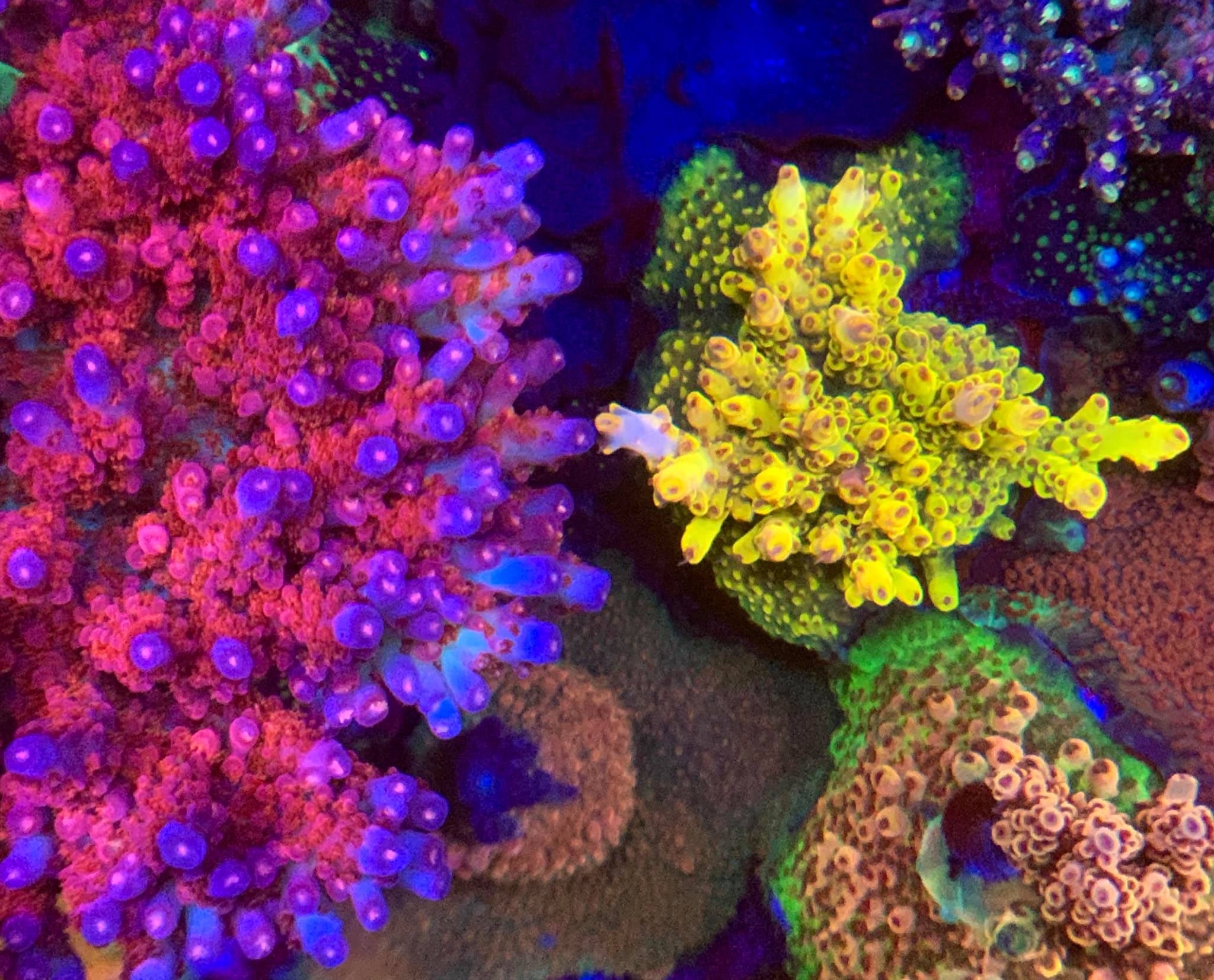
What Are Minor Trace Elements?
So, what exactly is a minor trace element? By definition, minor trace elements are only available in amounts that are barely measurable in the ocean and in most tanks. In my opinion, the best definition of minor trace elements was that given by Spotte (1979) where he defined minor trace elements as those elements which do not contribute to the salinity of seawater. Trace elements comprise the .01% of seawater that is not taken up by chlorine, sodium, sulfur, magnesium, calcium, potassium, and strontium.
These trace elements are defined scientifically as having a concentration in seawater of 0.1-.001g per 1000g of seawater or 0.1 to 0.001 ppt. There are at least 24 elements in seawater that are classified as minor trace elements and that have been found to be critical to the processes of our tank’s inhabitants. This list includes such elements as gold, silver, uranium, tungsten, tin, lead, and arsenic, but these have little to no positive impact on our corals.
Those that have been found to produce a significant impact on the biological processes of the corals and other reef animals are considered “essential” or critical. Trace elements that have been found to be critical for the biological processes of the animals that we keep include Barium, Boron, Bromine, Chromium, Cobalt, Copper, Flouride, Iodine/Iodide, Iron, Manganese, Molybdenum, Nickel, Potassium (not a trace element per se, but critical for some colors), Rubidium, Selenium, Vanadium, and Zinc.
Trace Element Concentrations
It should be pointed out, that despite how stable the ocean is and how long it has been stable, the concentrations, despite how relatively low they are, vary greatly, and this variance is caused by a number of factors. Trace elements can vary by depth or location on the reef and vary from one ocean to the next, as well as from reef to reef in the same ocean. (Spotte, 1979, Craggs pers comm). And this variance is not small as there has been shown to be as much as a 100 to 500% difference in the concentration of some elements (Rejomon, 2007).
For these reasons the concentrations of these elements are usually given in ranges rather than with one specific number. This concentration variability undoubtedly has led to some debate as to which concentrations are best for coral husbandry as well as the impact these concentrations may have. Due to this variability, I am not a big advocate for adding trace elements in mixed groupings. I do not advocate this method as the concentration of each element is rarely listed on the bottles and trace elements are rarely utilized in equal amounts so if these mixed bottles are used it may result in one trace element being used up while another one that is not being used as fast builds up.
There is also another reason that knowing the right concentrations is difficult to assess. As noted above, all of the trace elements occur in very low concentrations with some of them like Iron, Selenium, and Manganese occurring at levels of approximately 0.0000002g/L (Spotte, 1979). As a result of these ultra-low concentrations, testing for most of these elements with home kits is not a valid way of assessing their levels in any meaningful way. And this has been the case during most of the time that the hobby has existed. Therefore, it was at best a guess up until the last ten years as to what the levels of many of these elements were in any tank at any given time.
In my opinion, assessing the levels of these trace elements took a big leap forward when ICP testing became widely available. This type of testing, which is now being done by at least seven companies has made it possible to get at least a more general value of what the trace element concentrations are in any tank at a given moment in time when the water sample was taken.
All of these tests are done in approximately the same manner, what differs between them is the algorithm they use to ascertain the concentration in a given sample and which elements they measure. This requires the establishment of baselines from known concentrations, and frequent calibrations to confirm that at any given time the values determined are accurate. Frequent or at least regular testing by the user allows for changes to be noted as well as how much of a given trace element is being consumed, so that adjustments and additions can be made.
Testing allows for not only optimal levels to be established in any given tank but also when a given element is out of whack and can be adjusted before it causes problems. In my own tanks when things are good, I do regular testing quarterly or monthly, but when things are going badly testing may be done weekly. This type of testing has allowed me to find problems from causes that otherwise would have gone undetermined for months.
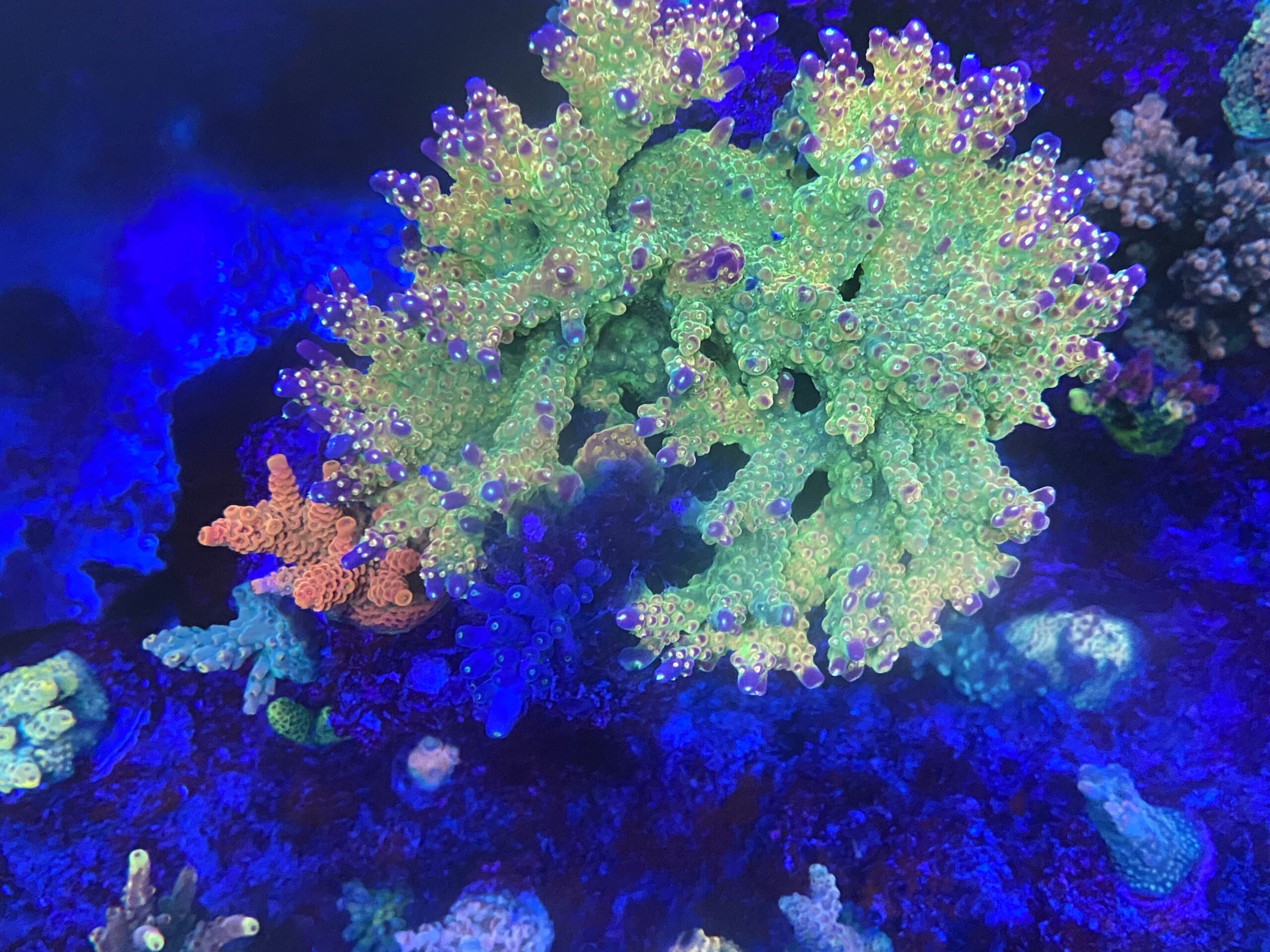
Balancing Trace Elements
It should be noted that it is difficult to manipulate only one trace element that is not at the proper level if a trace element mix is being used. For this reason, in all of my tanks, I now use individual trace elements to get the levels to their proper levels, but this is only done after ICP testing. Fortunately, ReefMoonshiners has developed a comprehensive dosing calculator on their website that allows for how much of any given trace element needs to be added based on ICP results to a given tank’s volume, to get to the desired levels. This, in my opinion, is superior to dosing mixed trace elements at unknown concentrations in order to an unknown level, which is what we used to do.
Since each trace element is consumed at a different rate in each tank, it only makes sense to dose according to what is being consumed. Each of the trace element manufacturers that I spoke to all agreed with one thing: trace elements are only deleterious if they are overdosed. Doing proper testing and dosing based on this testing prevents this. An example of this is copper, which most of us try to keep as low as possible at all times. At the normal seawater concentrations of 0.0000005g/L (.5 micrograms/L) copper is critical for some of the enzymes necessary to break down waste material as well as a key component for plants and zooxanthellae to complete photosynthesis and is in blood and other pigments.
But if this concentration is increased as little as fourfold to 20 micrograms/L it becomes toxic over time to most invertebrates including most of the corals we commonly keep. This is an example of why testing is so critical. Below is a description of each useful minor trace element, what it does, and the concentration it should be kept at.
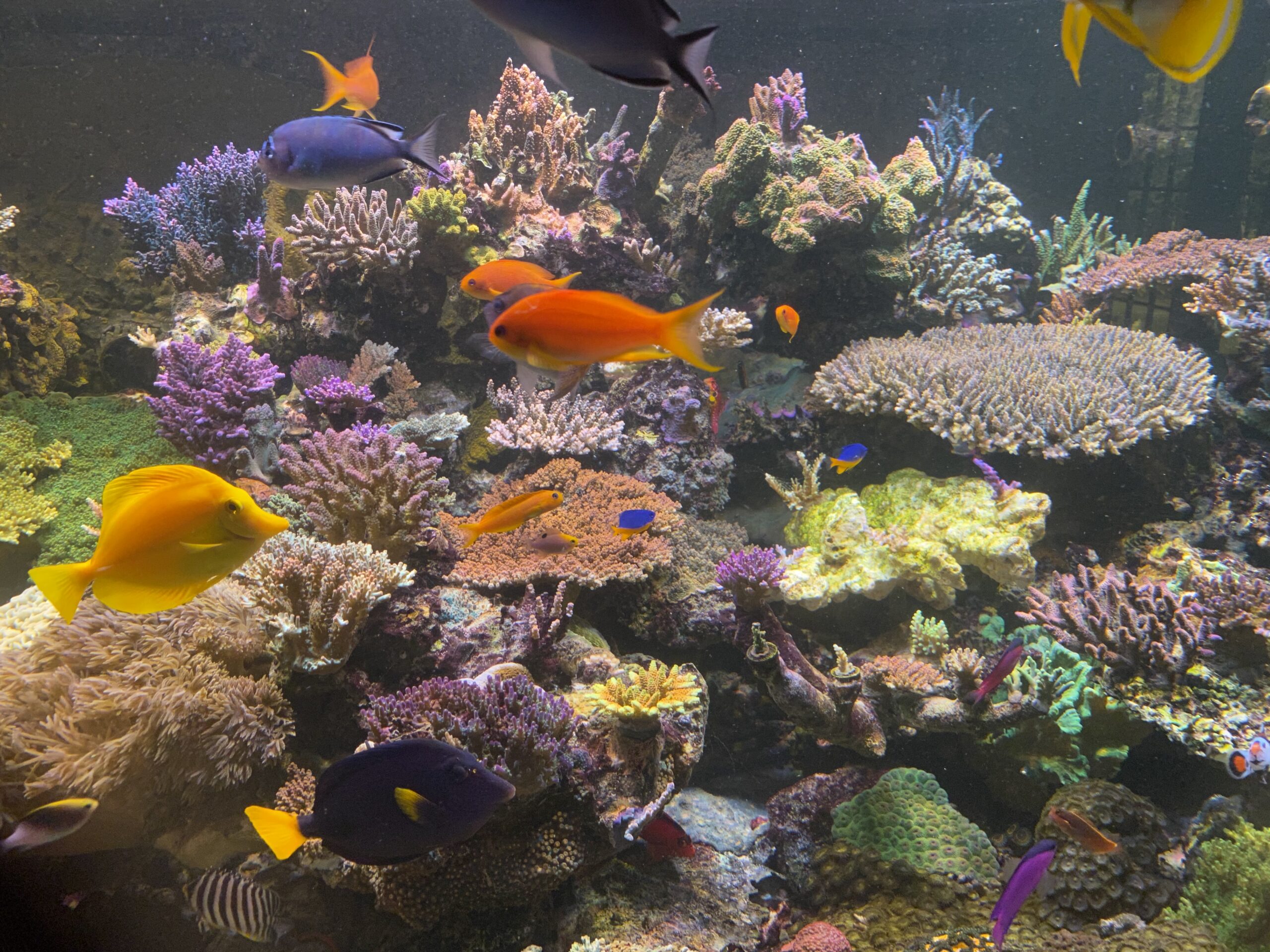
Barium
Like calcium and magnesium, barium is a component in the makeup of many stony coral skeletons. While its concentration can vary widely between corals it is present in almost all scleractinians skeletons. It also seems to play a role in the host’s defenses as low concentrations below 3-4 mcg/L may lead to STN/RTN outbreaks, my goal is to keep it in the 8-10 range. I have found this element to show as undetectable on some ICP tests, so if a value comes back 0, try another test, as you do not want to overdose it above 50.
Boron
Boron is found in natural seawater at a level of 4-5mg/L and is crucial in the metabolism of marine plants (chloroplast formation) and algaes. Of interest to us, it is associated with red coloration in sps corals. To bring out the red coloration that is lacking, the level can be raised to 6-8mg and as high as 10mg/L to bring up red coloration, but levels above this should be avoided as it has been found to be slightly toxic above this level and can cause bleaching, so care should be taken not to go above this level.
Bromine
Another key trace element for coloration is bromine. However, there is a difference of opinion as to which colors it is critical for. Some feel it is critical for red and pink coloration, as it is in the pink chromo protein pociloporin. Others feel it brings out blue and purple in corals. This may be caused by the level at which bromine is maintained. It has also been shown to enhance polyp extension and the “metallic” coloration in some corals. Recommended doses range from 60-85. However too high of levels should be avoided as high levels can cause a diminution of strontium uptake by the corals.
Chromium
Unlike most other elements the level of chromium needs to be so low that it is undetectable on all ICP tests. However, it still needs to be supplemented as it is constantly depleted. This metal may be involved in coral fluorescence, and in bringing out blue and purple coloration, but too-high of levels are more deleterious than too-low. If levels are abnormally high it may be due to stainless steel corrosion somewhere in the tank.
Cobalt
Like chromium, the best level for cobalt on an ICP test is undetectable, but it still should be supplemented in low doses, nonetheless. This element is in some vitamins and may be a cofactor in their uptake, so it may be crucial to the long-term health of some corals. It may also help bring out green and yellow coloration. This element helps in the structural formation of soft corals, but at too high of a level it diminishes the fluorescence in corals.
Flouride/Flourine
Like Bromine, Flourine/Flouride seems to play a role in bringing out the purples and blues in corals. Again, this may vary with its concentration. In normal seawater it is 1.2-1.4 mg/L, but, I keep it slightly higher at 1-2ppm in my tanks. This element has the potential for being toxic over 2 ppm, so I only add it once or twice a week. Also, it tends to dissipate quickly over time naturally, so the delay that occurs during shipping and ICP testing may result in a slightly lower measure than is actually in the tank, so this needs to be taken into account. It should also be noted that some municipal authorities add it to the water, so this should be taken into account when analyzing water to make sure it is not overdosed.
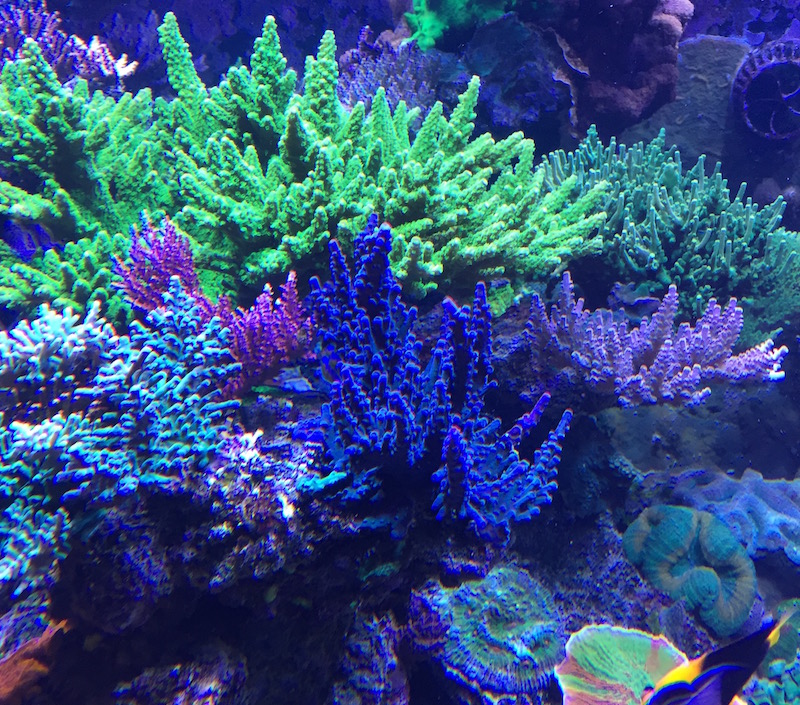
Iron
Another element that we usually think of as metal, but which is an important trace element, is Iron, it has a concentration in seawater of 1-3ppb. This element is crucial for a number of critical biological processes including oxygen transport in the blood of fish, light reactions in algae including zooxanthellae, and the action of enzymes involved in denitrification. It has also been linked to increasing the green and yellow coloration in corals. Unlike copper, it does not accumulate but rather precipitates out quickly when it is introduced to alkaline water and it is also quickly skimmed out.
Unlike copper, its harmful effect is typically not due to overdosing, but rather its effect on causing algae blooms. So it should only be added when it has been determined that nitrate and phosphate levels are both low. Otherwise, high iron levels coupled with high nitrate and phosphate levels can lead to rapid algae outbreaks, which unfortunately are difficult to get under control even when iron supplementation is discontinued.
Because of this, iron or trace elements containing iron should be added in small frequent amounts rather than in single bolus doses and only after nutrient levels are determined and kept low. In addition to influencing algae growth, iron also affects the growth rate in some corals.
Iodine
Like Iron, Iodine is an element that precipitates out quickly, so it needs to be added in small amounts on a regular basis. For me, it is the first trace element that I added on a regular basis and have been adding for the past 35 years. Its main biological activity like iron is to assist in the growth of plants and possibly sponges. It has also been found in the bodies of gorgonians as well as some stony corals, but its exact function in these animals has to date, not been fully ascertained. In terms of coral coloration, it is involved in bringing out the purple coloration.
Over the years and especially early in the hobby it also was associated with reducing bacterial loads that stress corals and may act as an antiseptic for some corals and may protect them from bleaching (Fossa and Nilsen 2001). These last two claims are difficult to establish and confirm owing to how fast iodine is oxidized in seawater and many of the claims are anecdotal. But this oxidation process alone may be beneficial for reducing acids and other harmful compounds.
Some of these claims may be the result of the known anti-bacterial properties of Lugol’s iodine, which has been used for years to “clean” new corals and in quarantine tanks to reduce the bacterial load. In the mid-1990’s when RTN outbreaks were commonplace in many tanks owing to the stressed corals coming from Fiji, a common recommendation to “cure” or slow these outbreaks was to lower the temperature in the tank to 74 or less and add Lugol’s iodine on a regular basis. I have to admit that for me at least this worked. However, I cannot say for sure if it was the Lugol’s or simply lowering the tank’s temperature that reduced the stress on the corals and allowed the coral’s own defenses to fight the bacteria that was causing this problem.
As I noted, I have been supplementing Iodine in the form of diluted Lugol’s almost since I started keeping corals. Because I have been using it for so long, I feel that it does provide some benefit when it is added daily in small amounts. However, I should also note that it does have the potential to bleach out a tank should the tank be overdosed with it.
Manganese
This trace element is a rather recent addition to trace elements found to be useful. It helps algae grow and may help the tissue in lps and sps corals to fully expand. It may also enhance the vibrancy and fluorescence in some sps corals up to 1-2ppm. But above this level it may actually depress fluorescence. It has a level of .01 ppm in seawater, so it is usually undetectable on most ICP tests. I add a small amount daily so that it just stays below the detectable level on my ICP tests.
Molybdenum
Molybdenum was one of the first trace elements that was touted as essential and that needed to be added during the early days of the hobby. It has been suggested that it enhances blue and purple coloration in some sps corals. This element is involved in plant reactions as well as in the conversion of nitrate to nitrogen gas via its presence in enzymes. It has also been reported to have some role in blue-green algae production, so its dosing might be reduced during cyano outbreaks. Its use has also been shown to increase polyp extension and coral vibrancy. The desired levels are 10-12 micrograms/L in our tanks.
Nickel
Nickel has long been a neglected trace element in many mixes or supplements. However, it has recently been speculated that normal to high levels may help corals survive bleaching events during high temperatures and also in bringing out blues in corals. The normal level in seawater is 1.7mcg/L, which means it will not show up on most ICP tests. It can be kept at slightly higher levels with seemingly no toxicity, so I keep mine at a level where it is just barely detectable.
Potassium
While not a minor trace element per se, potassium has long been shown to be critical for bringing out the red and pink coloration in corals. Its normal level in seawater is 400ppm, but in order to bring out the full red and pink coloration in corals I have found 420-450 ppm to be optimal. However, care should be taken not to get above 470-480 as levels above this have been found to increase tissue necrosis events. Potassium can be added from commercial mixes or from dissolved salts of potassium chloride or potassium nitrate depending on what else needs supplementing.
Rubidium
Of all the trace elements being added regularly, rubidium is the most controversial as to date there is little understanding as to what benefits it provides other than it naturally occurs in seawater at a level of 120mcg/L. So, it is not really known if it is good or bad. I have been told, however, that at high levels it inhibits potassium uptake by corals. For these reasons, I only add it weekly in small amounts to keep the level undetectable, andmost ICP tests do not even measure for it.
Vanadium
Vanadium is another relatively recent addition to our trace element supplements. It is not so much that it is not understood as much as it has been difficult and expensive to manufacture. In natural seawater, it occurs at 1.8mcg/L so it is undetectable with most ICP tests. Despite its low level it has been found to be critical for the long-term health of some interesting ascidians like sea squirts and tunicates. It also may help in a coral’s defense against pathogenic microorganisms. This may be especially helpful if corals are fragged frequently. It is taken up or oxidized rapidly so it needs to be added in very small amounts daily.
Zinc
The final of the trace elements is Zinc, another metal. Zinc is critical in the transmission of genetic information as well as protein production. There are also some anecdotal reports that its supplementation can dramatically increase the growth rate in some stony corals. I am testing this out currently and hope to see if everything being equal supplementing zinc speeds up growth.
Do Traces Make a Difference?
While I am a big advocate for having my tank’s water be as close to natural seawater as possible, I was not convinced that adding trace elements via commercial mixes did what I had hoped when I used them in the random fashion as I did in the past. As mentioned, while trace element mixes may seem to provide all that is necessary, their ratios may not match what is needed and some may be consumed faster than others.
Most manufacturers also provided little guidance as to when or how frequently they should be added, nor did they suggest testing. For these reasons when Triton, Coral Essentials and recently ReefMoonshiner trace elements came out I was excited to try them again. Especially ReefMoonshiner since not only were these elements in larger sized bottles, but they also said to only add them after an ICP test had been taken.
Being able to plug in the desired numbers on their calculator along with the specific amounts needed made them much easier to use than any other trace elements. I have now been using them for ten months on a continuous daily basis and started to see results after two months. The results were increased encrusting of the corals with increased calcium and alkalinity uptake, more vibrant coloration, and in general healthier corals than I had before I started using these trace elements.
During this time, I also experimented with the optimal time to dose the elements and looked in the literature for what time might be best as well as how to dose them. From this, I came up with dosing nightly in small amounts one hour before the lights went off. During this time my skimmers are also turned off until two hours after the tank is dosed. This is done because as the lights go off the polyp extension of the corals increases so it is likely that they can more readily take up the trace elements. And by having the skimmers off allows for the trace elements to circulate without being skimmed off.
While trace elements have been being added to our tanks since the hobby started,only recently have we gotten a grasp of how important they are and how to measure them accurately. While adding them can help in some areas this will not overcome major flaws in our systems or poor water chemistry. Even when adding them and maintaining them perfectly, lighting, nutrient levels, flow, and major trace elements still need to be good in order to have our corals in optimal health with their most vibrant coloration. As we understand more and more about what is critical for long-term success, we are gradually getting to the point where something that we once took for granted plays a critical role in our long-term success.


